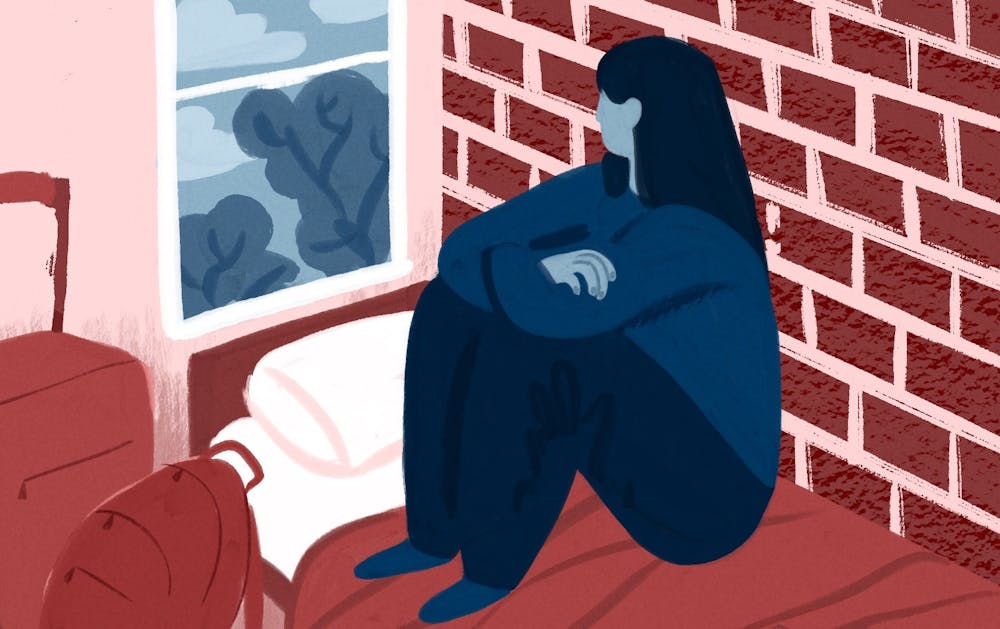As positive coronavirus cases continue to be reported within the ASU student community, many students know friends and classmates who have tested positive and were sent into isolation. However, many aren't familiar with what the full process looks like.
In an interview with The State Press Thursday, Vice President of Student Services Joanne Vogel and Associate Vice President of ASU Health Services and Counseling Services Aaron Krasnow explained the University’s exposure management methods and rationale, including details on where positive test information goes and whether daily health checks are a factor in exposure management.
Krasnow said there is a lack of understanding among ASU community members about its exposure management. He explained the differences between isolation and quarantine and why ASU's tracking of student exposure to the virus is not technically contact tracing.
What happens when a student tests positive for COVID-19?
When a student receives a positive test result from an on-campus laboratory, their results are automatically entered into ASU Health Services’ electronic health record system, before being reviewed by medical providers who send messages notifying students that their results are available, according to Krasnow.
“Some students only like to do things electronically, and are not keen on calling or answering the phone, and so a student can communicate to us through the portal, which basically functions a little bit like texting, if a phone for whatever reason is not there,” Krasnow said.
After notifying students of positive test results, Health Services tells students what symptoms to monitor, who to contact if students need help and how to begin isolation. They are also given the option to have their dean of students notified of their test results to receive logistical, academic and personal support if needed, Krasnow said.
As of Sept. 23, ASU reported 255 active student cases within its community.
What is exposure management, and how is it different from contact tracing?
The University’s process of tracking which students may have been exposed to COVID-19 is technically not contact tracing but is called exposure management, according to Krasnow.
"Contract tracing has taken on a term that kind of people get, so it just sort of persists in the environment," Krasnow said. "We're doing exposure management, which is our responsibility as the ASU community, faculty, staff and students."
While Health Services only tracks exposure of ASU community members, the University gives students who test positive directions on how to notify non-ASU community members that they were exposed to the virus.
Krasnow said the University reports all student cases with Maricopa County as required by law, whose contact tracers may follow up with students as well.
“We ask about people at ASU that they've been around longer than 10 minutes closer than six feet, which is Maricopa County Department of Public Health guidance … mask or no mask, it doesn’t matter,” Krasnow said of students who test positive.
Health Services contacts the students listed to notify them that they have been exposed to COVID-19. Members of the exposure management team do not tell students who exposed them to the virus or confirm students’ guesses about who exposed them.
Students who were exposed are instructed to enter a 14-day quarantine period from the point of their exposure.
Is the daily health check a part of contact tracing?
Krasnow and Vogel said although the daily health check app is equipped to track students’ reports for exposure management, the University is not currently using that function.
“We have made the decision at this point that the interviewing process you heard (Krasnow) outline is probably superior to that,” Vogel said. “Because what we don't know by that app, for instance, is like how long a period of time was and so it's just imprecise, in a way.”
In an interview with The State Press Wednesday, Interim Executive Vice President of ASU's Knowledge Enterprise Neal Woodbury said the daily health checks are to remind students to evaluate their health and gauge whether there is an “overarching health problem” in the ASU community.
READ MORE: Crow says University is effectively managing COVID-19
What is the difference between isolation and quarantine?
Krasnow said while it is a common misconception quarantine is more stringent and restrictive than isolation, the opposite is the case.
“Isolation means that you need to have your own bedroom and your own bathroom,” Krasnow said. “And then basically you're not to leave your space unless it's an emergency.”
University protocol requires students who tested positive to isolate for 10 days, according to its coronavirus FAQ page. Students may only isolate with another student in the rare case that both got the virus from the same place simultaneously, which Krasnow said is to minimize the risk of reinfection if the students have different strains of COVID-19.
Quarantine lasts 14 days beginning at the point of students’ exposure to the virus. Students in quarantine must have their own bedroom but may share a bathroom with another student as long as they haven’t tested positive for the virus and they aren’t in the bathroom at the same time, according to Krasnow.
Krasnow said students in quarantine are allowed to leave their rooms to “go for a walk or get some exercise,” as long as they wear a mask and avoid other people.
He added there is no way to strictly monitor students' behaviors in those situations, saying, "There's no circumstance in America, except for a judge's orders, that locks anybody in their house — none.”
Students are to monitor their symptoms in communication with Health Services during quarantine and are tested if they develop symptoms, Krasnow said.
In adherence with Maricopa County Health Department guidance, students do not have to test negative for the virus before leaving isolation or quarantine.
Reach the reporter at gforslun@asu.edu and on Twitter @GretaForslund.
Like The State Press on Facebook and follow @statepress on Twitter.




